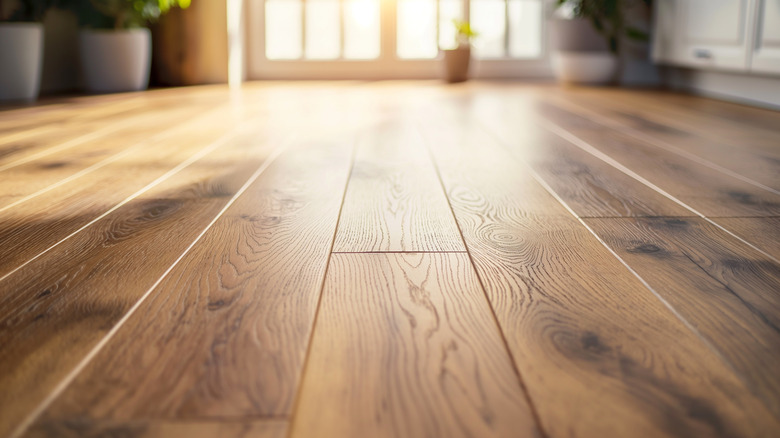How To Calculate Floor Load Capacity
Because figuring out floor joist load capacity requires a thorough understanding of the structural properties of wood, as well as building code requirements, it's a job best left to a structural engineer when it comes to determining the specifics of a building's design. Understanding the basics of the calculations, however, can help you to understand the load limits of your existing floor.
Live Loads and Dead Loads
Floors must be able to support two different kinds of weight loads. The dead load on the floor is the weight of the floor structure itself and anything else that is permanently attached to the floor. The live load is the weight of furnishings, people and anything else that the floor needs to support, but which isn't permanently attached.
The dead load on a floor is determined by the materials used in the floor's construction. A typical wood-frame floor covered with carpet or vinyl flooring has a dead load of about 8 pounds per square foot; if there's wall-board covered ceiling suspended from the underside of that floor, the dead load increases to about 10 pounds per square foot. Heavier flooring materials increase the dead load even more.
Building Codes and Limits
Local building codes specify the minimum live load that floors must be able to bear. The International Residential Code, on which most local building codes are based, requires that floors in non-sleeping rooms must support a minimum live load of 40 pounds per square foot, and floors in sleeping rooms must be able to handle a live load of 30 pounds per square foot.
Codes also specify how much floors are allowed to bend under load, a measurement called a deflection limit. The IRC says that floors must deflect no more than 1/360 of the floor's span. For example, a floor with a span of 10 feet must deflect no more than 1/3 inch, or 120 inches/360 inches.
Span Tables and Design Values
Span tables and tables that show design limits for particular lumber types allow you to determine whether a given floor design will meet code and design requirements. For a given joist size and spacing, the tables indicate the strength value, called the Fb value, and stiffness, called the E value, of the joist. Architects and engineers use these tables to determine the required size and spacing of joists as they design buildings, but you can use them to work backwards and calculate the load capacity of an existing floor.
Determining Load Limits
First, determine the size, the spacing and span, and the species and lumber grade of your floor joists. Look for a stamp on the joist that indicates the lumber's species and grade.
Use a design value table to find the Fb value for your floor joists. As an example, consider a room with a floor area of 10 feet by 11 feet, 2 inches built with No. 1 grade 2-by-6 Douglas fir-larch joists spaced 16 inches on center. A design value table shows that the joists have an Fb value of 1,495 and an E value of 1,900,000.
Next, consult a span table to cross reference the spacing and span to find the required Fb value for that table's load limits. In the example, the joists have a spacing of 16 inches and a span of 11 feet, 2 inches. The span table for a 30 psf live load/10psf dead load floor indicates a required Fb value of 1,315 and a minimum E value of 1,800,000. In this case, your joists are adequate to support a 30 psf live load and 10 psf dead load.
Use span tables for progressively heavier loads until you find the limits of your floor. In this example, the table for a 40 psf live load/10 psf dead load floor shows that the joist in the example have a required Fb value of 1,644 and an E value of at least 2,400,000. That means that the existing joists are not adequate to support a 40 psf live load.
After you've determined the load limit of your joists, you can use that figure to determine the total acceptable load for the room or building in question. In the example, the floor area of the room is approximately 112 square feet. With an evenly distributed live load of 30 psf, which the tables show the floor is able to support, the total weight on the floor would be about 3,360 pounds. Increasing the total weight on the floor to 4,480 pounds, however, results in a live load of 40 psf, which is beyond the floor's load capacity.
